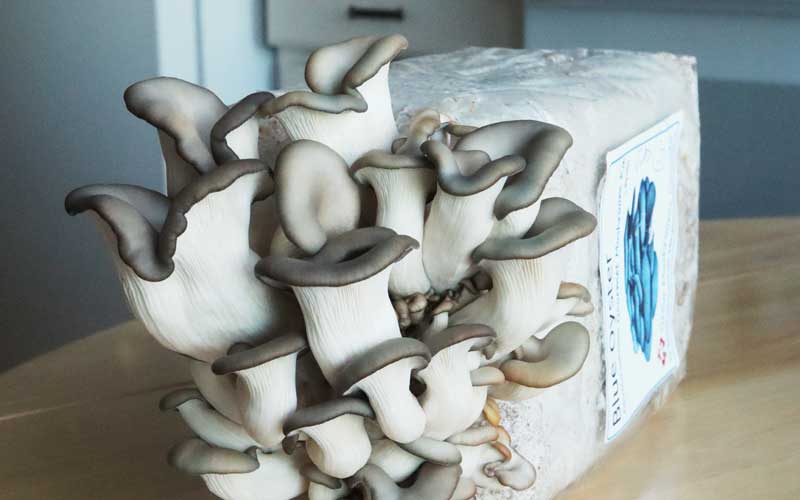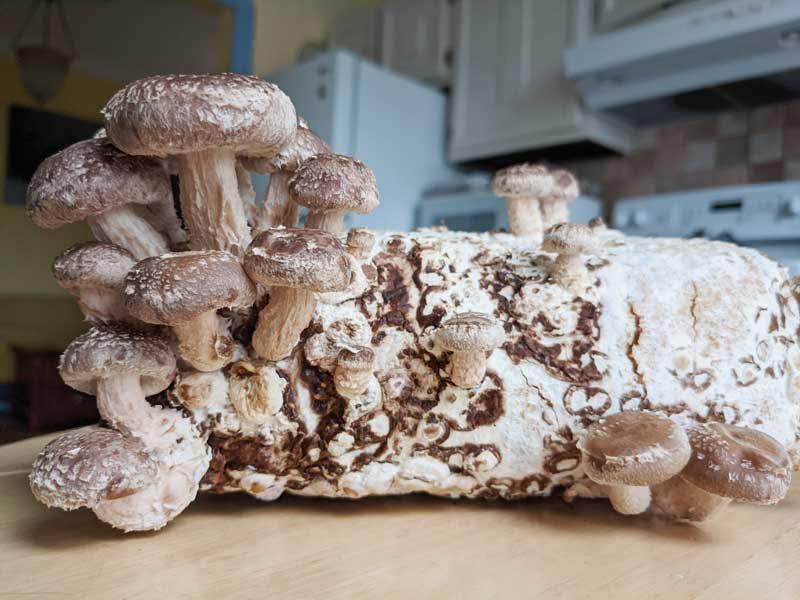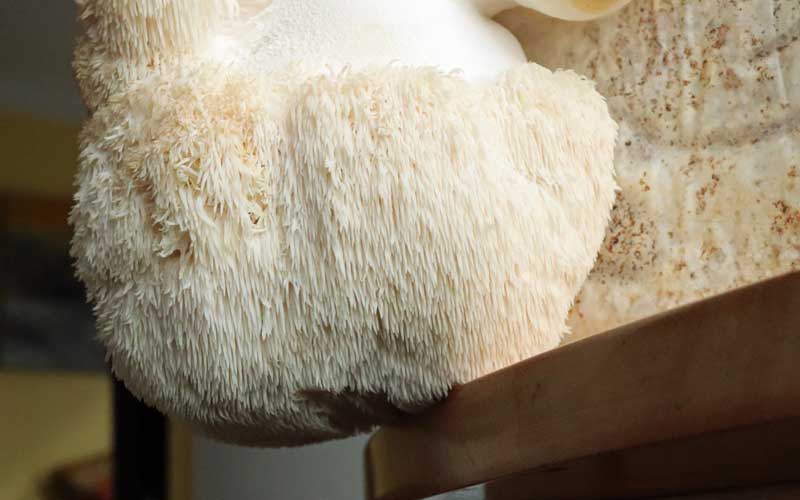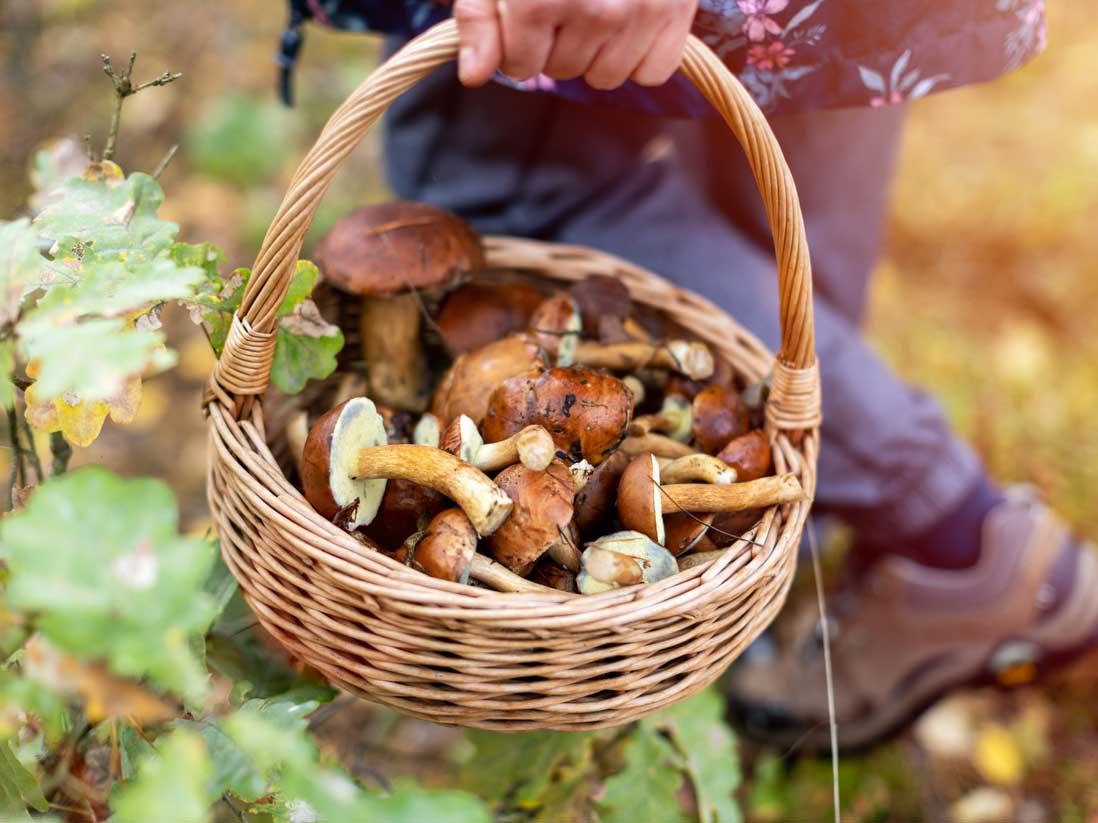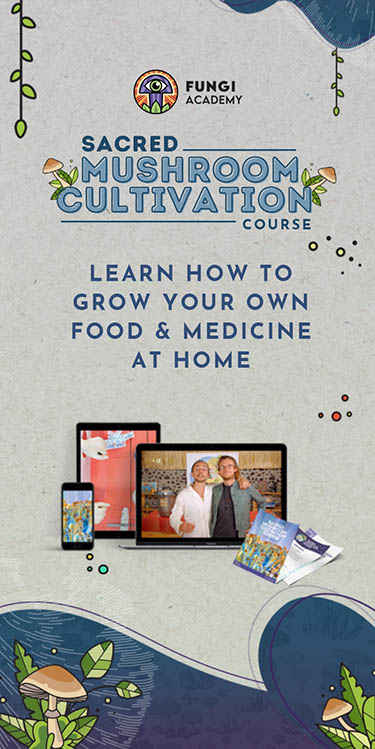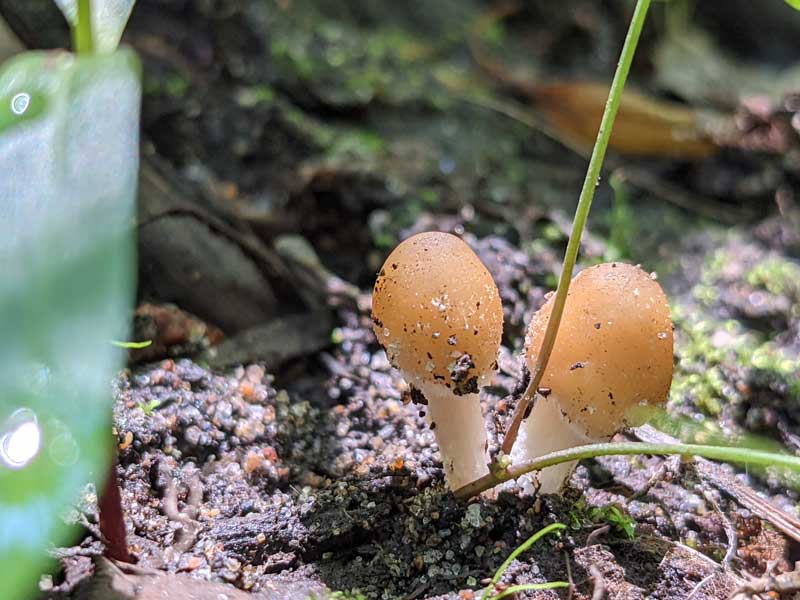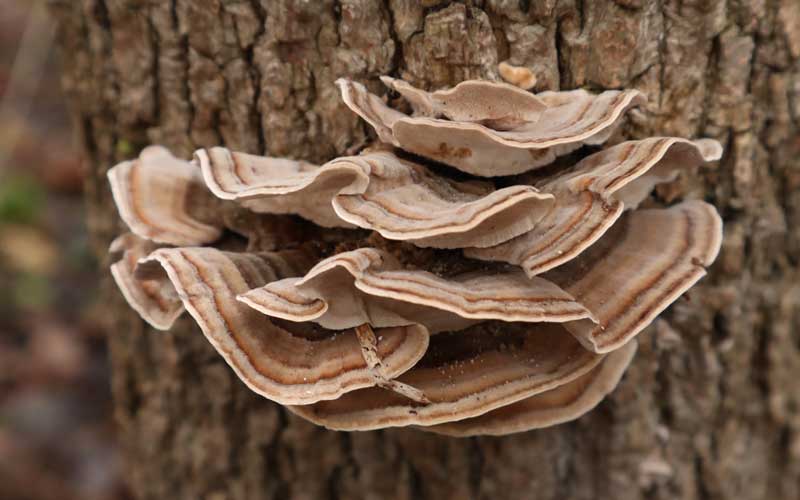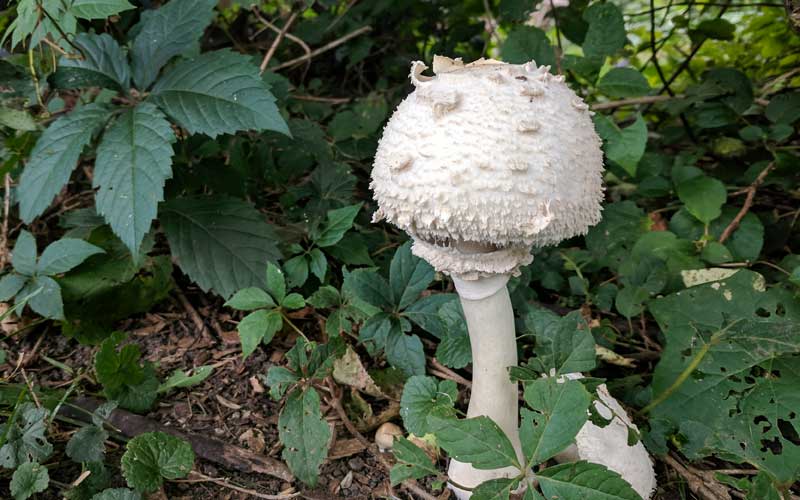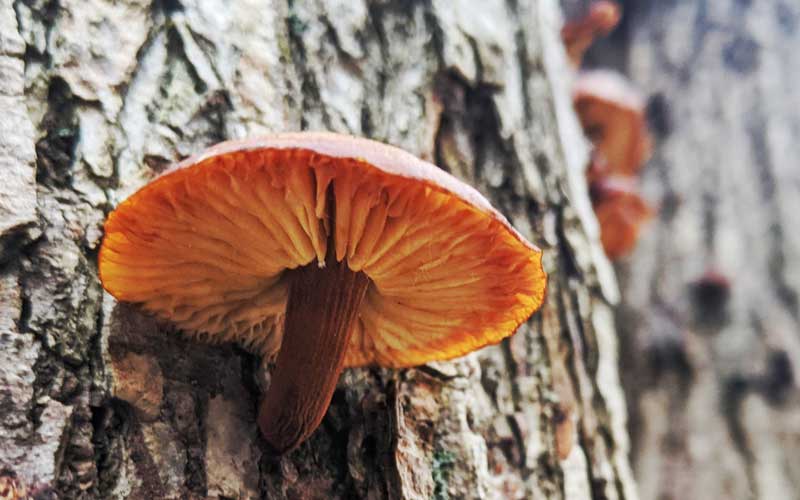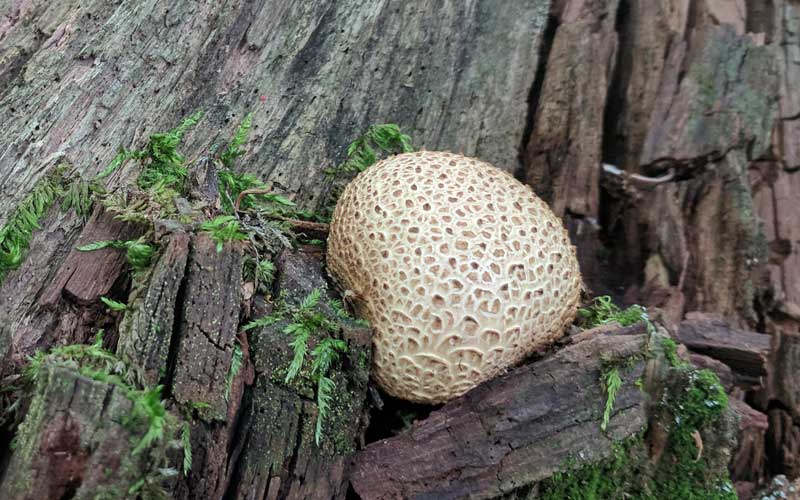- Home
- Find Mushrooms
- Grow Your Own
How to grow mushrooms at home – a beginner’s guide.
What could be better than growing your own mushrooms at home?
Mushrooms are at their best when are picked, cooked, and eaten fresh.
Buy them at a store and they’re probably already a few days old.
Recently I was at a local market where there’s a stall devoted to mushrooms. But when I asked how long since they were harvested, the answer was at least two days.
Maybe you’ll have better luck sourcing fresh mushrooms.
But… why not just grow your own?
You don’t need a garden or even a balcony. I have some mushrooms growing right now, and they’re on a shelf by a small window in our basement.
There’s something magical about the process.
Mushrooms can grow on a simple substrate, like straw, wood chips, oat bran or even used coffee grounds. In other words, unlike plants that do best in a rich, organic soil, mushrooms can grow on what we often see as waste organic matter.
As always, they’re the great decomposers and recyclers… turning waste into fresh food.
Mushrooms also grow really quickly. You might wait a week or two before they begin to pin, but once they get going, they can double in size almost daily.
There are three ways to set about growing your own mushrooms, each requiring different levels of expertise, and different equipment.
Let’s take a look…
Three ways to grow your own mushrooms at home.
It used to be that you had to be a bit of a mushroom alchemist to grow your own mushrooms. It was a process shrouded in mystery and hard to master.
But that has changed.
Level One: Get started with a simple mushroom grow kit.
Your grow kit comprises a plastic bag stuffed with a suitable substrate that is fully colonized with the mycelium of whatever the mushroom it is you’re growing. Depending on where you buy, you might also get a spray or misting bottle and a humidity tent.
And that’s it. That’s all you need to start growing your own mushrooms.
We’ll go into more detail on this in a moment.
Once you’re comfortable with a mushroom grow kit, you may decide to level up.
Level Two: Buy spawn for use with your own substrate.
The only difference here is that you’re going to be creating your own substrate and packing it into your own bags. It’s a little more demanding because you’ll need to pasteurize or sterilize your substrate first.
How come? Because the air – inside and outside - has plenty of molds and bacteria floating around, and these can find a home in your substrate and then compete with the mycelium of the mushrooms you want to grow.
At this level, you prepare your own substrate and then inoculate it with spawn you buy from a supplier.
And you’re not confined to growing in the house, or in a fruiting block in a bag. If your climate and time of year allows, you can add the spawn to a layered bed of straw or some other substrate, in a corner of your garden.
Level Three: Make your own mushroom cultures and spawn.
This level is a whole lot more challenging.
Now you’ll be doing everything you do in level two, but you’ll also be creating your own mushroom cultures and spawn. You’ll need a sterile environment in which to inoculate your own spawn, and a pressure cooker to sterilize the spawn before inoculation.
As with learning any new skill, you’re better off starting with level one.
Back to Level One and growing mushrooms with a simple grow kit.
If you’re new to this, you’ll definitely want to start by ordering a mushroom grow kit. The difficult work has already been done for you.
You simply order the bag, find a suitable place in your home to place it, cut a slit or X in the plastic and then spray that opening three or four times a day.
That’s pretty much it.
What kind of mushrooms should you grow?
There are a few different options with grow kits, but if this is your first time you might want to start with an Oyster mushroom kit. Oyster mushrooms seem to be the most forgiving when it come to first-time growers.
As luck would have it, Oyster mushrooms are also delicious.
OK… as promised, here are a few suppliers of mushroom grow kits.
If you’re in the US, there are plenty of choices, but one of the best-known suppliers is Back to The Roots.
If you’re in Canada, you can try Grow Mushrooms Canada.
And if you’re in the UK, try GroCycle.
Anywhere else - or for more choices - just search with Google.
Have fun with your first try at growing mushrooms at home!
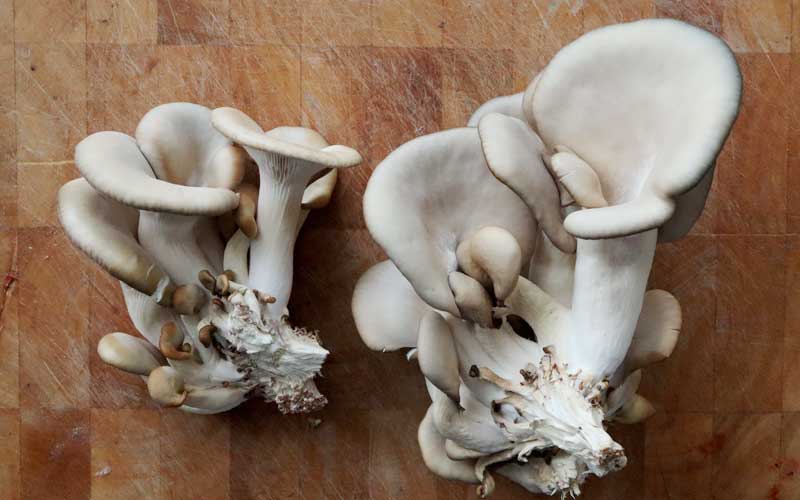 This is the final harvest from the Blue Oyster mushroom grow kit I featured at the top of the page. Delicious!
This is the final harvest from the Blue Oyster mushroom grow kit I featured at the top of the page. Delicious!Related Topics:
A beginner’s guide to wild mushroom foraging in the woods.
With patience and commonsense, you can learn to safely forage for wild mushrooms. Careful, though. You might get hooked! The full article...
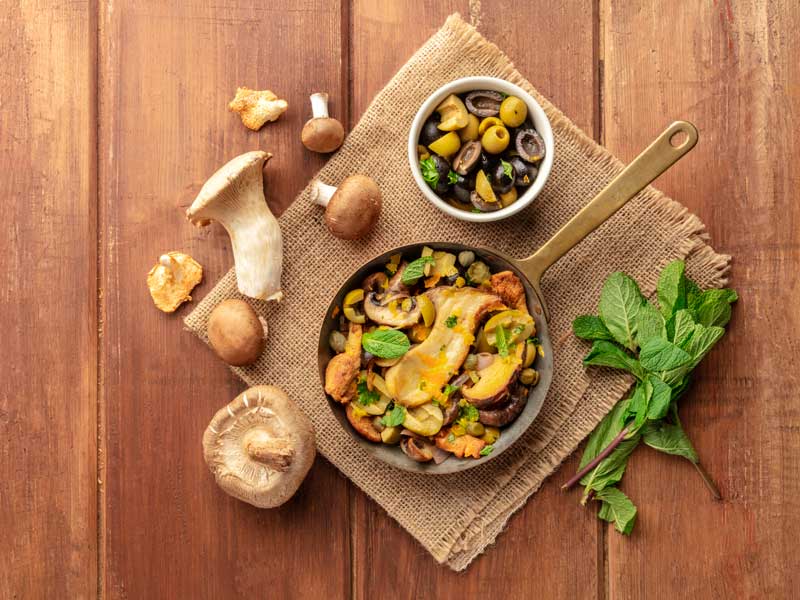
The nutritional value of mushrooms in your diet is greater than you think.
Mushrooms are dense with nutritional value and a variety of textures and flavors… including chicken, lobster and shrimp! Read the full article...
